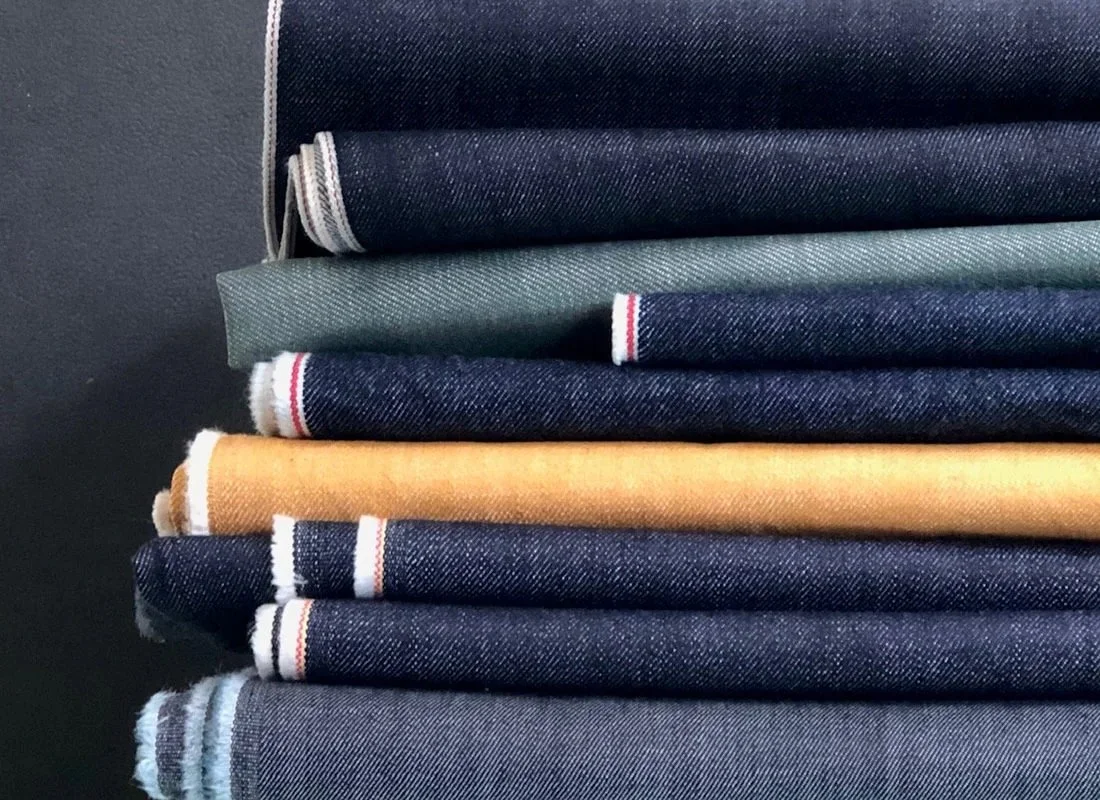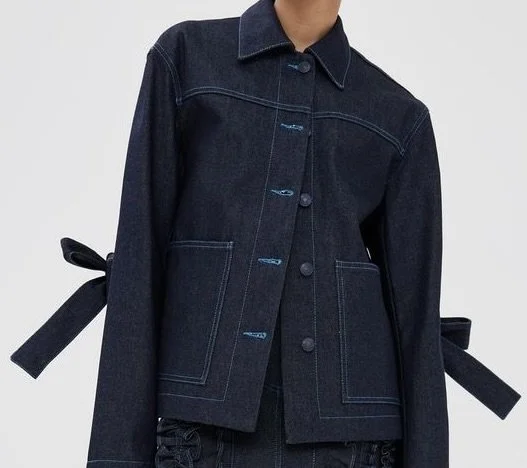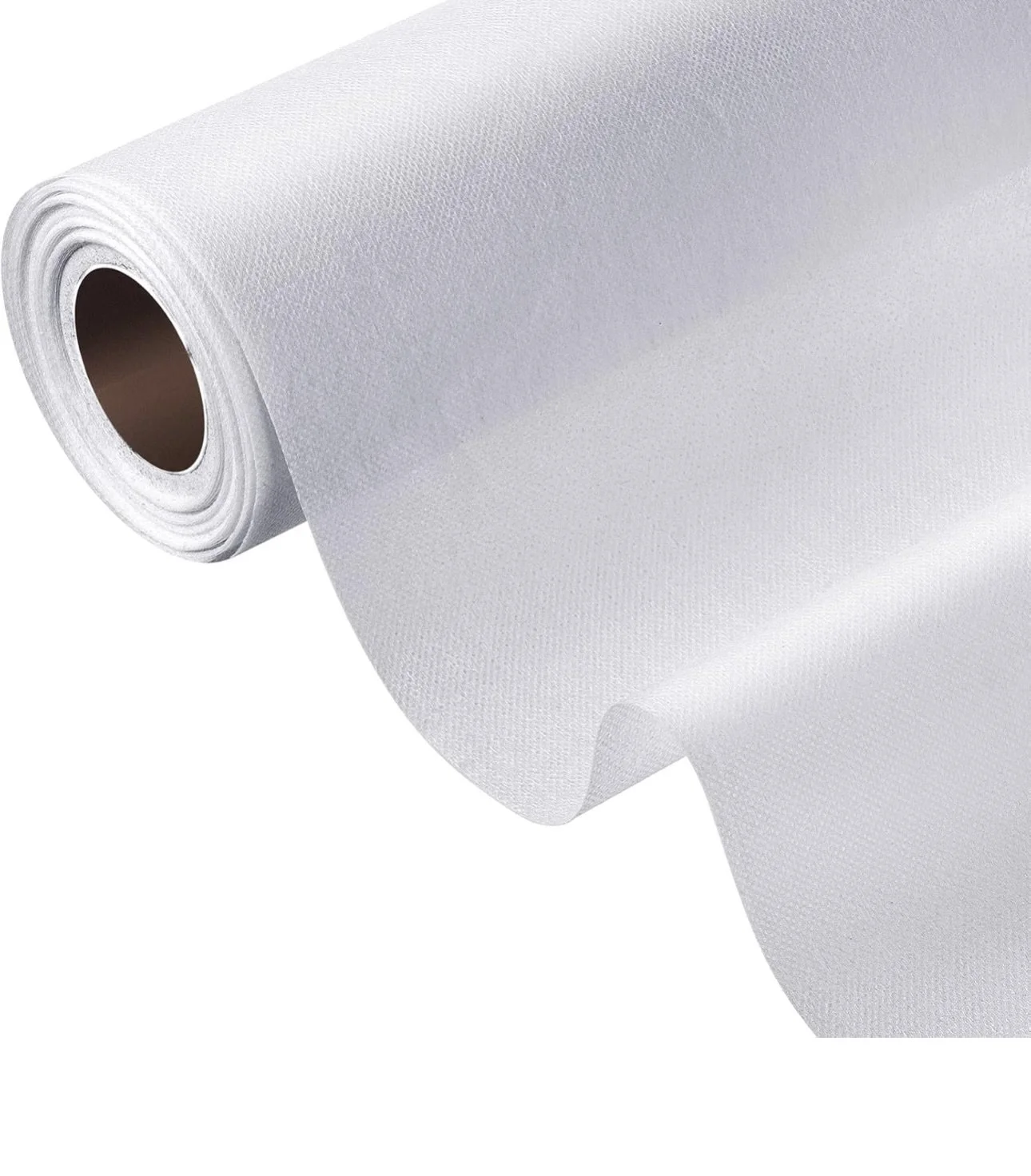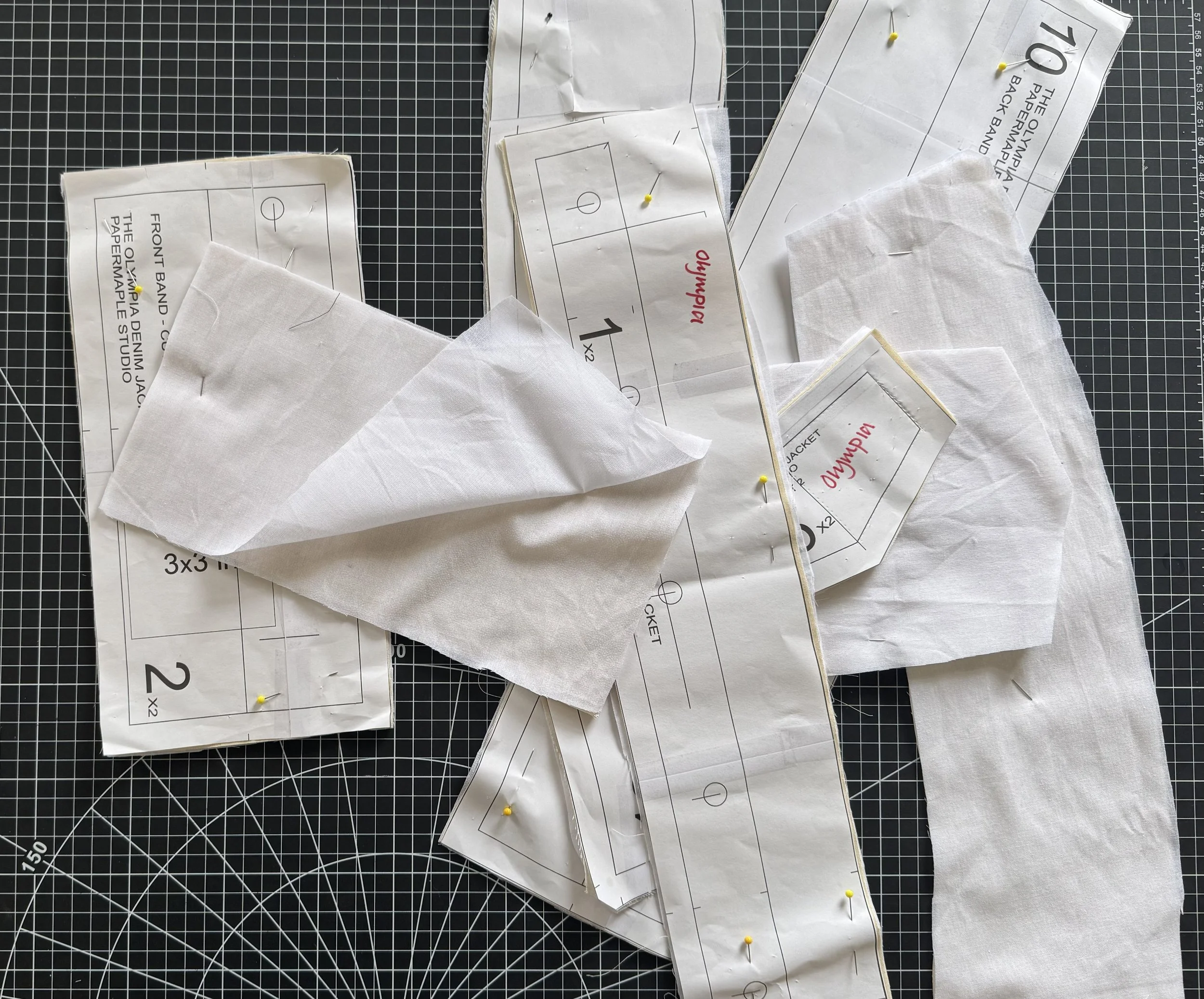The Olympia and Athena Jacket - Fabrics / Part 4
We have been sewing up a storm in the studio while testing these patterns. We have used various medium and heavy denim, boucle, and wool with much success.
When choosing a fabric, I suggest picking one with weight, and minimal stretch.
The jacket is flat-felled, so the heavier or thicker the fabric, the more construction adjustments you will have to factor in, which should be taken into consideration.
Seam allowances on a very thick fabric should be increased to approximately to one inch to enable the fold-over needed to finish the seam neatly with a flat seam. Alternatively, you can finish the inside with a serge or binding and sew with a regular seam.
FABRICS
Denim: Here is a fantastic article all about denim and the different types.
.A nice medium weight will pull a garment down, helping to maintain that classic boyfriend shape when worn.
Sheep wool includes virgin wool, merino wool, and Shetland sheep's wool. Cashmere and mohair come from goats. Other wool is sourced from alpacas, llamas, vicuñas, camel, and the Arctic muskox. These sources can be woven or knitted into a variety of fabrics like felted wool, wool fleece, and worsted wool.
COTTON - DRILL AND TWILL
While both twill and drill are fabrics with a diagonal weave pattern, "drill" is considered a heavier, more durable type of twill, with a tighter weave and a more pronounced diagonal pattern, making it ideal for heavy-duty applications like workwear and upholstery, whereas twill is often used in clothing due to its softer feel and better draping qualities; essentially, drill is a specific, heavier-duty type of twill fabric.
BOUCLE AND TWEED
Bouclé - a looped or curled ply or fabric woven from this yarn. The term comes from the French word, "boucler," meaning to curl. Stable, malleable and soft - they rarely crease and are easy to sew.
Tweed - A rough, woolen fabric, of a soft, open, flexible texture, resembling cheviot or homespun, but more closely woven. It is usually woven with a plain weave, twill or herringbone structure. Colour effects in the yarn may be obtained by mixing dyed wool before it is spun.
IS BOUCLE THE SAME AS TWEED? No, they actually have slightly different characteristics. Boucle is softer, coarser and has naturally larger slubs, whereas Tweed is a little more durable, and sturdy.
Gabardine is a durable and smooth twill-woven cloth, typically made of cotton. Most people have heard of the fabric gabardine but don't know anything about it. It is one of our favorite materials and it has an incredible history.
GABARDINE
Gabardine was actually created by Burberry's founder, Thomas Burberry, in the late 1800s. Burberry wanted to create a versatile fabric blend that would withstand a lot of wear and tear.
Burberry drew his inspiration and the name for his new fabric from the gabardine of the Middle Ages. Gabardines were loose, long garments worn over breeches and blouses. Typically, beggars used them for extra protection from the elements. Often, the gabardines were tied around the waist.
To create his new material, Burberry developed a tightly woven fabric that relied heavily on worsted wool. The weave of the worsted wool was relatively smooth on one side and ribbed on the other.
COTTON AND LINEN
While both linen and cotton are natural fibers that come from plants, they are not the same. Cotton fibers come from the cotton plant while linen comes from the flax plant.
Comparing linen vs cotton, linen generally outlasts cotton due to its robust fibres. Breathability: Linen is highly breathable, making it an excellent choice for hot and humid climates. It effectively wicks moisture away from the body, helping to keep you cool and dry.
The softness and smoothness of cotton resolve the roughness and skin friction issues of linen. On the other hand, the lightness of the cotton material is shouldered by the linen's stiffness. These blends and their unusual combination make it a perfect choice for summer clothing.
Linen or Cotton in a medium weight would work well, especially if you live in a warmer climate.
Next up: Interfacing your fabric.






